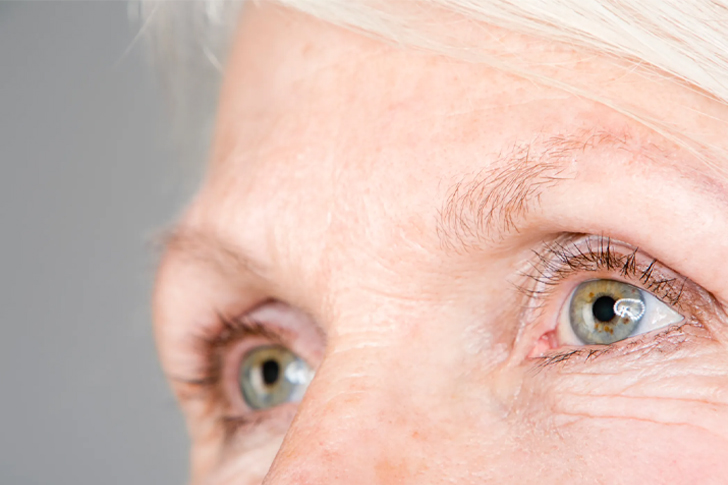Initial Indicators of Macular Degeneration to Note
Macular degeneration, also known as age-related macular degeneration (AMD), is a significant cause of vision loss, particularly among the elderly. Recognizing the early signs of this condition is crucial for timely intervention and management. This condition affects the macula, the central part of the retina, and impairs the vision needed for activities like reading and driving. In this article, we’ll explore the initial indicators of macular degeneration and provide insights into understanding this disease better.

Understanding Macular Degeneration
Macular degeneration is primarily classified into two types: dry (atrophic) and wet (neovascular or exudative). About 80-90% of AMD cases are the dry form, which progresses slowly and causes gradual vision loss. The wet form, though less common, leads to more rapid and severe vision loss due to abnormal blood vessel growth beneath the retina that leaks fluids and blood.
Demographic and Risk Factors
Certain demographic factors significantly raise the risk of AMD. It most commonly affects individuals aged 50 and above. According to the American Macular Degeneration Foundation (AMDF), AMD is the leading cause of vision loss in Americans over 60. Genetics also play a crucial role, with higher prevalence rates among Caucasians compared to other ethnicities. Other risk factors include smoking, obesity, high blood pressure, and a diet lacking in fruits and vegetables.
Early Signs and Symptoms of Macular Degeneration
Recognizing the early signs of macular degeneration can be critical for managing its progression. Individuals may notice subtle yet progressive changes in their central vision. Some of these indicators include:
Visual Distortions: Straight lines or faces might appear wavy or bent. This distortion is typically one of the earliest signs of macular degeneration.
Reduced Central Vision: There may be noticeable difficulties in seeing objects clearly in the center of the visual field, which is a hallmark of progressing AMD.
Need for Brighter Light: When reading or performing tasks, additional illumination might be necessary as the macula’s ability to perceive light decreases.
Difficulty Adapting to Low Light: Individuals might find it harder to adapt to lower light levels, often taking longer to see in poorly lit environments.
Blurriness of Printed Words: Words in a book or newspaper may start to blur, making reading difficult without aid.
Decreased Color Intensity: Colors may not appear as bright as they used to, or differentiating between certain shades becomes challenging.
Darker or Empty Areas: One might perceive dark, blurry areas or whiteout spots in the center of their vision.
Any combination of these symptoms necessitates a consultation with an eye care professional for comprehensive evaluation and diagnosis.
Diagnostic Approaches
To diagnose AMD, ophthalmologists employ several tests. A common diagnostic tool is the Amsler grid, which helps reveal visual distortions typical of macular degeneration. Further assessment, including Optical Coherence Tomography (OCT) scans and fluorescein angiography, are utilized to examine the retinal layers and identify any abnormal blood vessels, respectively.
Prevention and Mitigation Strategies
While age-related macular degeneration cannot be completely prevented, certain strategies can mitigate risk factors and progression. These include:
Maintaining a Healthy Diet: Incorporating leafy greens, fruits, and vegetables rich in antioxidants can help. Fish high in omega-3 fatty acids is also recommended.
Regular Exercise: Activities that promote cardiovascular health can reduce the risk of AMD.
Avoiding Smoking: Smoking exponentially increases the risk of AMD and its progression. Quitting smoking can significantly decrease this risk.
Regular Eye Exams: Frequent examinations, especially for those over 50 or with a family history of AMD, are crucial. Early detection can greatly aid in maintaining visual health.
Implementing these lifestyle changes not only contributes to a reduction in AMD risks but also benefits overall health.
Future Directions in AMD Research and Treatment
Ongoing research efforts continue to innovate treatments for macular degeneration. In recent years, the development of anti-VEGF medications to treat the wet form of AMD has been transformative. These drugs help reduce the number of abnormal blood vessels in the retina and slow leakage and swelling. For dry AMD, researchers are exploring various avenues, including the potential of stem cell therapies and innovative drug solutions aimed at halting or even reversing the degradation of the macula.
In conclusion, recognizing the early signs of macular degeneration and taking proactive measures can significantly affect the quality of life and vision preservation. Regular eye exams and consulting with healthcare providers when symptoms arise are crucial steps in managing AMD. With advancing research and awareness, there is hope for those affected by this prevalent condition.







Recent Comments